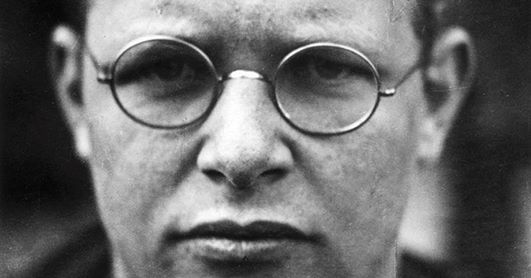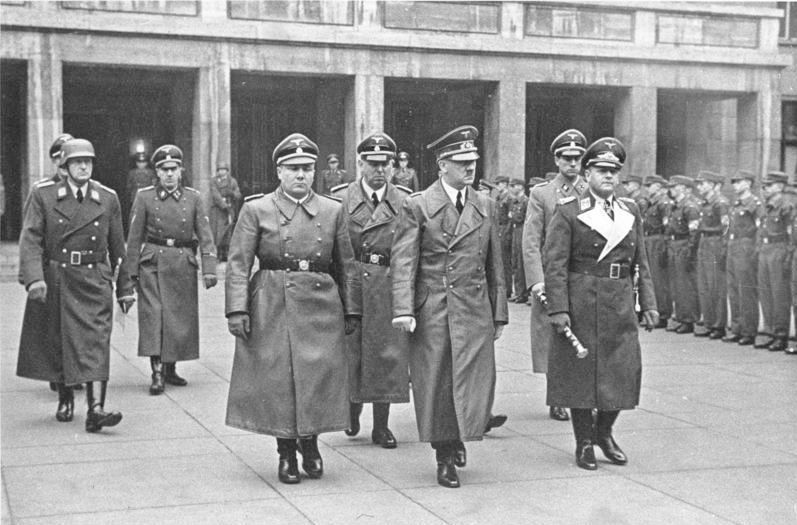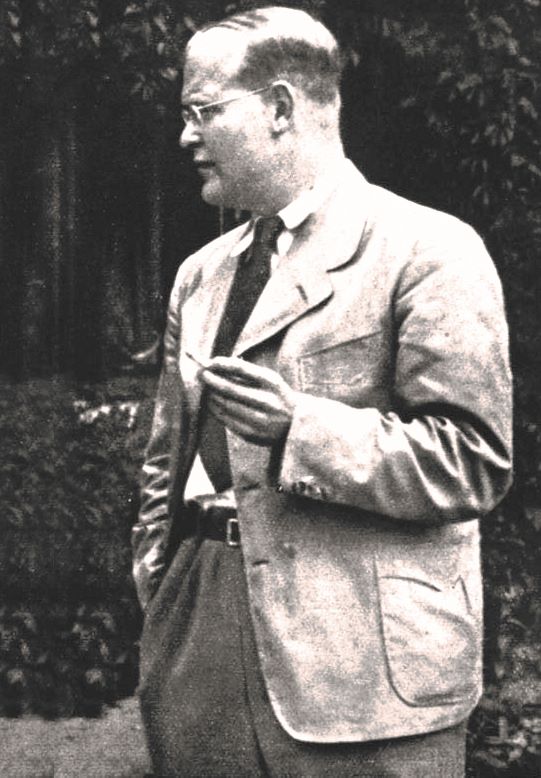5 lessons from the life of Dietrich Bonhoeffer
October 13, 2022

It takes a brave man to stand up to a dictator and perhaps an even braver one to stand up to your church.
Dietrich Bonhoeffer has been held up as a hero of the cause of justice and equality, and a statesman of modern Christian theology. For some readers, these two things might not seem a natural fit. But for Bonhoeffer, the two things weren’t just parallels on paper but a singular guide for life.
In fact, it was his faithful commitment to others that carried him to the point of death.
It’s been more than 80 years since Bonhoeffer was murdered by the Nazi regime, but the lessons he lived and taught mean just as much now as they did at the height of World War II.
From thought to action
Born in 1906 to a prominent German family, Bonhoeffer fit perfectly with Hitler’s Aryan stereotype—he was tall and inherited his mother’s blue eyes and blond hair.
But the affinities between Bonhoeffer and the Nazis stopped there.
It was at the age of 14 that Bonhoeffer decided that he was going to be a theologian—and that’s exactly what he did and evidently, did very well. By the age of just 21 he had graduated with a doctorate in theology.
After completing his studies, Bonhoeffer worked as a pastor at a German-speaking church in Barcelona, Spain. Then he travelled to the United States for study, which at the time he found shallow and uninspiring. However, the African-American churches he worshipped at impressed him, particularly their zeal and their attitudes and actions towards the racially motivated social injustices they endured at the time.
Within two years of returning to his home in Germany, he had become one of the first to speak out publicly against Hitler.

A new way
Bonhoeffer’s view was not a popular one—many German Christians, encouraged by Hitler’s manipulative use of Christian language, saw him as the nation’s saviour.
Undoubtedly impacted by his time worshipping in African-American churches, Bonhoeffer spoke against the persecution of the Jews. And, when Hitler demanded the churches swear loyalty to him, Bonhoeffer spearheaded the creation of the Confessing Church, who despite political pressure declared that Jesus Christ was its head, not the FÜhrer.
Sadly, Bonhoeffer gained only limited support. Heartbroken for Germany and his people, Bonhoeffer moved to London where he pastored two German-speaking churches. He continued to build connections and speak out against the horror occurring in his homeland. When Bonhoeffer returned to Germany, he was quickly denounced as a pacificist and enemy of the state. In 1937, he became involved in training pastors of the Confessing Church. His resistance was gaining traction. The Nazis were taking note.

Resist
Bonhoeffer knew full well that refusing to swear allegiance to Hitler at the time could lead to execution. In 1939, he received an invitation to teach in the USA. He took up the opportunity, escaping German conscription and the threat to his life. But once he arrived in the States, Bonhoeffer realised that he could not be away from his people during such a dark and dangerous time.
“I will have no right to participate in the reconstruction of the Christian life in Germany after the war if I do not share in the trials of this time with my people,” he wrote. “Christians in Germany face the terrible alternative of either willing the defeat of their nation in order that civilisation may survive or willing the victory of their nation and thereby destroying our civilisation.
“I know which of these alternatives I must choose; but I cannot make that choice in security.”
Two weeks later, he was on a boat returning to Germany.
As war broke out, Bonhoeffer found himself drawn to the patriotic movement that was working to overthrow Hitler. And so, working to avoid conscription into combat, Bonhoeffer joined the German military intelligence agency. Here he found many who shared his concerns and passion—the organisation included many who were opposed to Hitler.
His job at the agency, at least on paper, was to use the international church connections he had built up over the years to help advise the military. In reality, he used his time to find support for the German resistance.
The church pastor had become a double agent.
His quiet and outspoken resistance placed Bonhoeffer on the edges of various plots to assassinate Hitler. For a Christian, such actions were morally and spiritually burdensome.
But as the horrors of the Third Reich continued to grow, Bonhoeffer found himself reluctantly concluding that the assassination of Hitler would be the lesser of the evils.
“If I sit next to a madman as he drives a car into a group of innocent bystanders, I can’t, as a Christian, simply wait for the catastrophe, then comfort the wounded and bury the dead. I must try to wrestle the steering wheel out of the hands of the driver.”

To the point of death
Despite the dangers that lurked around every corner, Bonhoeffer lived in hope for the future and in 1943, he proposed to Maria von Wedemeyer. Shortly afterwards however, he was arrested and imprisoned —his role in helping Jews escaping to Switzerland having been uncovered by the Gestapo.
After a short time in prison, Bonhoeffer was sent to Buchenwald concentration camp. Despite the severe punishment he received, he continued to practise peace, grace and kindness to those around him, including the German guards.
Two years after his arrest, Bonhoeffer was linked with an old plot to assassinate Hitler. His execution was ordered. On April 9, 1945, he was hanged, along with 5000 others across the country. Faithful to the end, Bonhoeffer’s last recorded words were, “This is the end—for me the beginning of life.”
It was just two weeks before the camp was liberated and World War II came to an end.
Some would argue that Dietrich Bonhoeffer could have lived a quiet, safe and happy life if he had not spoken so radically against the Nazis. But, when your convictions and faith are as strong as his, to not act, to not speak out on behalf of others and to not prayerfully work for the cause of peace, would be anything but joyous.
While we may not be living under tyranny to the extent of Nazi Germany, his call to be boldly faithful to our beliefs and to resist misplaced authority for the sake of others rings just as true today as it did 80 years ago. There are some real life lessons we can learn from Bonhoeffer:
- Life is best lived for others
Ultimately, Bonhoeffer’s selflessness brought about his demise. But his faith drove him to see service to others as life’s purpose, both individually and collectively. “The church is church only when it is there for others.”
- Focus on what really matters
Amongst the noise of war and politics Bonhoeffer was able to home in on the things that really count, and he encourages us to do the same. “There is hardly anything that can make you happier than to feel that you count for something with other people. What matters here is not numbers but intensity. In the long run, human relationships are the most important thing in life . . . Everything else is very close to hubris.”
- Embrace optimism
Even when he was surrounded by the cold concrete walls of prison Bonhoeffer found reasons to hope. “I read, meditate, write, pace up and down my cell—without rubbing myself sore against the walls like a polar bear. The great thing is to stick to what one still has and can do— there is still plenty left—and not to be dominated by the thought of what one cannot do, and the feelings of resentment and discontent.”
- Don’t just think—do
Faced with the opportunity to escape with his life, Bonhoeffer turned around and returned to Germany, knowing that any moment he could be arrested, imprisoned and killed. “Action springs not from thought, but from a readiness for responsibility.”
- See the world from below
In both word and action, Bonhoeffer encourages us to see “the great events of world history from below . . . from the perspective of the outcasts, the suspects, the maltreated, the powerless, the oppressed and reviled, in short from the perspective of the suffering.”
Braden Blyde is a freelance writer based in Adelaide, South Australia






